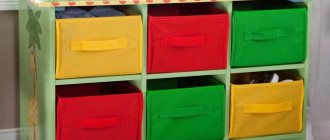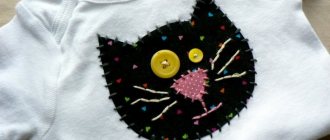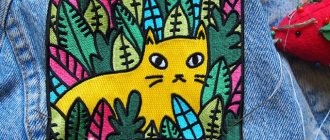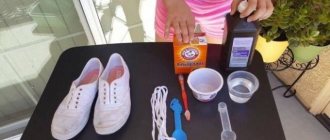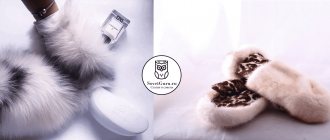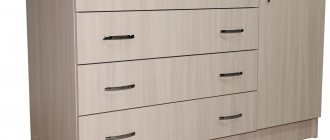Stripes and chevrons came into our lives quite a long time ago, but it is worth noting the fact that initially chevrons were used only by military personnel, so that other soldiers and officers could distinguish them. With the advent of football fans, especially the so-called. “Near-footballers” patches became part of the everyday life of teenagers who supported their team. For them it is also a kind of sign of difference from “strangers”. Our production makes patches for both civilians and military personnel, so today we will tell you how to sew a patch on your clothes yourself.
Let's say you have a patch made by us, but you don't know how to attach it to your clothes. There are two ways: machine and manual. We do not recommend the machine version; unwanted stitches may remain on the patch; they will be visible on the outside and on the inside and will ruin the whole idea. Our master class is dedicated to the second option, hand sewing. This method is available even to those who have never picked up a needle. In addition, we will tell you about a special hidden stitch that will help make the fastening invisible. With a little patience and accuracy, you can sew a patch onto your clothes!
So, we will tell you about all the steps that you need to go through in order to sew on your chevron.
Examples of patches on clothing: on a jacket, on a backpack or on a T-shirt
Stripes, or patches as they are also called, are now in fashion. Of course, we could just buy a patch, but making things with our own hands is much more enjoyable. So we find different ways and techniques to make ourselves a new patch. Plus, by creating your own patch, you can make any design and use any picture you like.
Perhaps you don’t even know how to embroider or you’re simply scared by the idea of making something with your own hands. Believe me, there are embroideries that a beginner can easily handle and it is not necessary to have a lot of experience. All it takes is desire and a little patience!
In this way you can decorate a school bag or a children's backpack. Children love patches!
Recently, in fashion we often see designer embroidery of precious stones.
Smileys and graphic patches look very cute and can be sewn anywhere.
And it doesn’t matter at all where you sew the patch you made: on a sleeve or on a denim jacket, the main thing is that you create your own style in this win-win way!
Manufacturing process
Having theoretically familiarized yourself with the work process and having an idea of chevrons, you can move on to creating interesting, colorful embroidery.
Let us consider in detail the features of chevron manufacturing. For creative work, we definitely need an embroidery machine, even a household one.
To complete the creative procedure we will need:
- selected embroidery pattern
- fabric base
- needles
- required spool threads of different colors
- tailor's scissors
- lighter or candle
- wooden hoop
- glue stick
Application of insignia
The chevron is part of the uniform equipment of various structural units:
- police
- police
- military
- security guards
- some enterprises
Often, insignia are used for uniforms of staff of huge network marketing, hypermarkets, or are used to designate brands. The chevron is used to distinguish enterprises or law enforcement agencies, or for the purpose of advertising a certain brand. Consumers quickly recognize by signs which company or power structure the employees represent. Clothing decorated with insignia looks representative and respectable. Sportswear is also decorated with certain signs that distinguish different sports enterprises.
Tell your girlfriends
Support the Womee project, because we put our whole soul into it - share the article with your friends by clicking on one of the buttons below
The peculiarities of making chevrons mean that they are attached to stretchy fabric and then sewn onto the product. And the quality of the finished product depends on the level of hooping. They have a huge number of varieties.
The uniforms of many organizations and departments are decorated with a sewn chevron - the insignia of various professional corporations, denoting various corporate characteristics.
How to make a patch with your own hands - master class
Determine the size and shape of your patch. You can trim the excess fabric close to the embroidered work like I did, or leave a hem. I was originally going to make a round shape, but ultimately decided to make a line of peacock feathers along the edge. Use a pen to outline your shape and only once you've decided on it, cut out! Use scissors to cut the patch into the desired shape.
- Important: Be careful not to cut your embroidery stitches if you choose to cut them close to the edge of your needlework.
Next we glue the layers together using adhesive web or dublin, if you have thin embroidery. Gluing with web is done using an iron and high temperature. This process will be completed only after we have glued the patch and allowed all layers to cool completely.
Under the high temperature of the iron, the adhesive web melts and glues two layers of fabric together. Therefore, the web must be very clearly cut to the size of your patch, so as not to stick it to the ironing board or iron.
Place the jacket face up. Determine the exact location. Place a glue web on top and the topmost layer is our embroidery. Concentrate not to move the fabric and use a preheated iron to iron the embroidery with good pressure. Also use the pointed end of the iron to secure the jagged edges around the entire embroidery. It is advisable to also put ironing cloth on this entire sandwich, so as not to spoil or dirty the embroidery.
- Important: Be careful when washing new clothes. Hand washing is always recommended for hand embroidery.
Look how cool it looks!
Now you see that making a patch yourself is not so difficult.
After adhering the patch, iron-on stitch around the perimeter of your decal. This is done in order to secure the embroidery. I used double thread of the color that was used in my embroidery.
- Important: homemade applications with the form completely filled out look very good.
Watch the video : only 5 minutes
How to sew chevrons of the Russian Armed Forces
>Those who are going to sew a chevron in accordance with Order No. 300, issued in 2015, will have to prepare:
- right sleeve to indicate affiliation with special forces, navy, military, or a specific military formation;
- left sleeve to indicate service in the General Staff, Ministry of Defense, Railway Troops.
- demi-season jackets, excluding senior officers;
- tunics, jackets, jackets, which are sewn from wool;
- field uniform jackets that do not belong to wind and waterproof suits;
- jackets for everyday wear during the changing seasons, in winter;
- flannel.
It is allowed to sew insignia on:
It is easy to remember where the chest patches of the Russian Armed Forces are located using the following wording: Russian Armed Forces - on the right, name patch - on the left. It is allowed to attach chevrons to field-type jackets and those that are included in the everyday wear of representatives of military units.
For detailed information, you should study the prepared photographs of the location of the chevrons on the uniform of the RF Armed Forces, the Ministry of Internal Affairs, the Ministry of Emergency Situations, the Federal Penitentiary Service, and the FSB.
Some Caveats
Mostly young, fairly brave girls who love to be the center of attention decorate their clothes with stripes. And although they are most often used to decorate everyday clothes, you can also find stripes on business suits and even evening dresses.
Still, you shouldn’t overdo it when using stripes as a decorative element, especially for women who are not of a young age.
By showing imagination, accuracy and perseverance, you can turn a completely ordinary item from your wardrobe into a fashionable and stylish outfit that will invariably be the center of attention of others.
Features of selection and use
The Charter of each service prescribes the rules for wearing badges and their type. First of all, the size, shape, color scheme, shades, font variant and its features, and other factors are regulated. For each parameter, deviations are unacceptable; everything must be subject to a single standard. Characteristics depend on the type and purpose of the element, type of military, etc.
The location of the stripes should be in the center, on the right or left arm, 8 cm below the shoulder line. Chevrons with identification information are located on the chest, below the line of the award badge
It is important that the text is written correctly, without any errors
Private security guard uniform
But it’s not just the uniform that identifies a security officer. It may be worth starting with special care and cleanliness, which is commonly called “dressing.” Since the employees of the private security company in the past are military or employees of the Ministry of Internal Affairs, an ironed uniform and polished shoes are just a habit developed over the years.
The duties of security guards to wear uniforms are specified in Appendix No. 10 to the Decree of the Government of the Russian Federation No. 587 “Issues of private detective (detective) and private security activities.” In particular, this provision states that:
- employees are required to maintain a clean and tidy uniform;
- cannot wear the uniform and its individual parts along with regular clothing;
- The uniform of private security company employees cannot be similar to the uniform of special forces employees, special units of the Ministry of Internal Affairs, etc.
Particulars may be prescribed by local acts (Charter of the private security company, separate documents), but the standard summer uniform of a security guard looks like this: a blue shirt with short or long sleeves and a black suit consisting of a jacket and trousers. It is possible to wear headwear (caps or hats).
As options (instead of shirts), private security company employees can wear knitted T-shirts (white or blue) and sweaters (dark blue and black).
The winter and demi-season uniform of a security guard includes an insulated jacket and overalls or trousers, as well as a headdress.
The uniform of security guards for women usually also consists of a shirt and a suit. In some cases, trousers can be replaced with skirts.
Protection for SBI groups, security guards of grades 5 and 6, as well as PPE for employees of private security companies working in hazardous industries, is worn over the usual uniform.
Types of seams
Seams can be simple stitched, double (French), linen, sewn, internal, stitched and overstitched. There is also a large group of seams: connecting and edge. Connecting ones can be stitched, stitched with open cuts, overhead with closed cuts, sewn and double. The edges are edging, hemmed and edge-stitched.
Note! There is another classification. Seams can be stitched, stitched-overlocked, hemmed, quilted, basted, marked, basted, fluff stitched, copied, buttonhole, tacked, buttoned and finishing.
Types of seams

